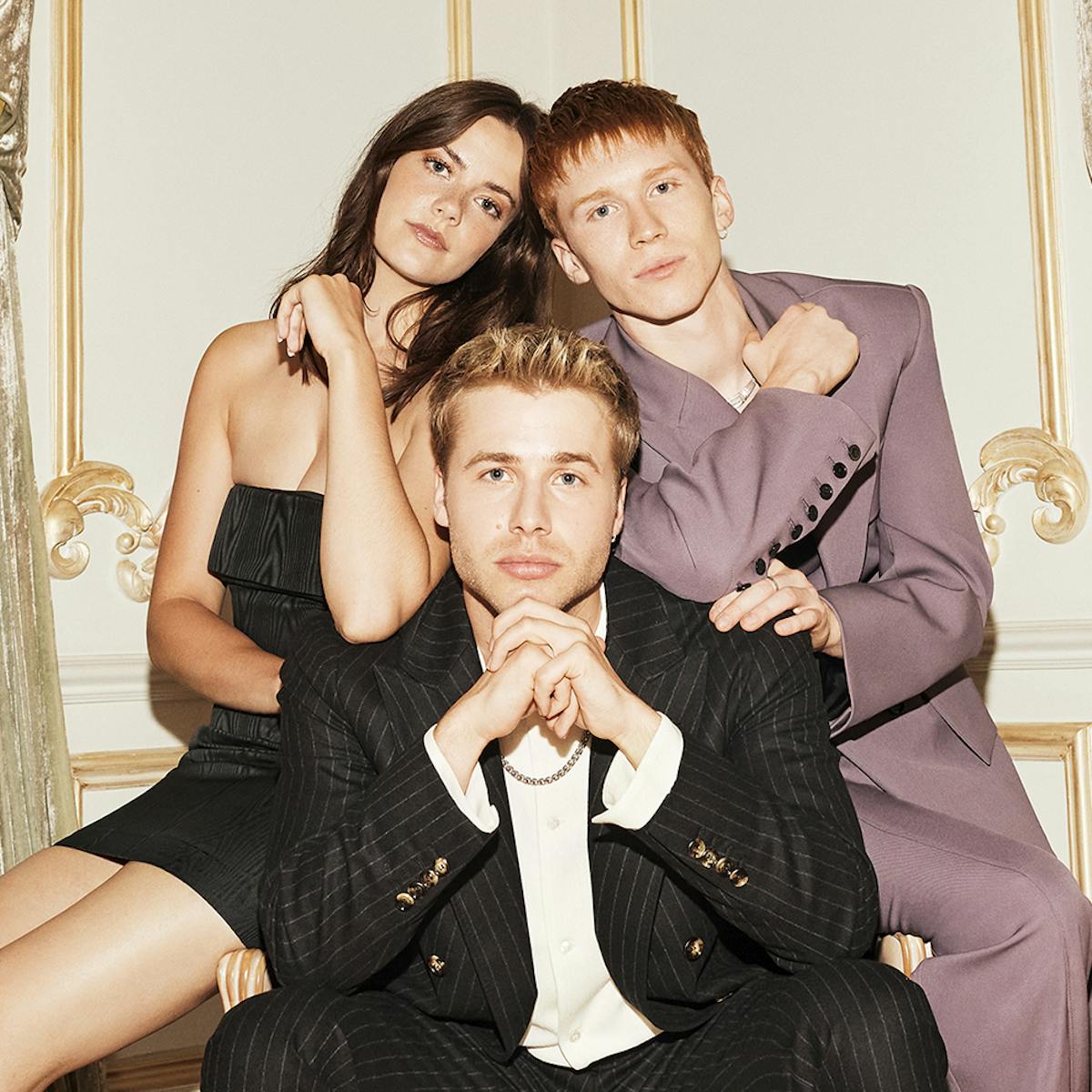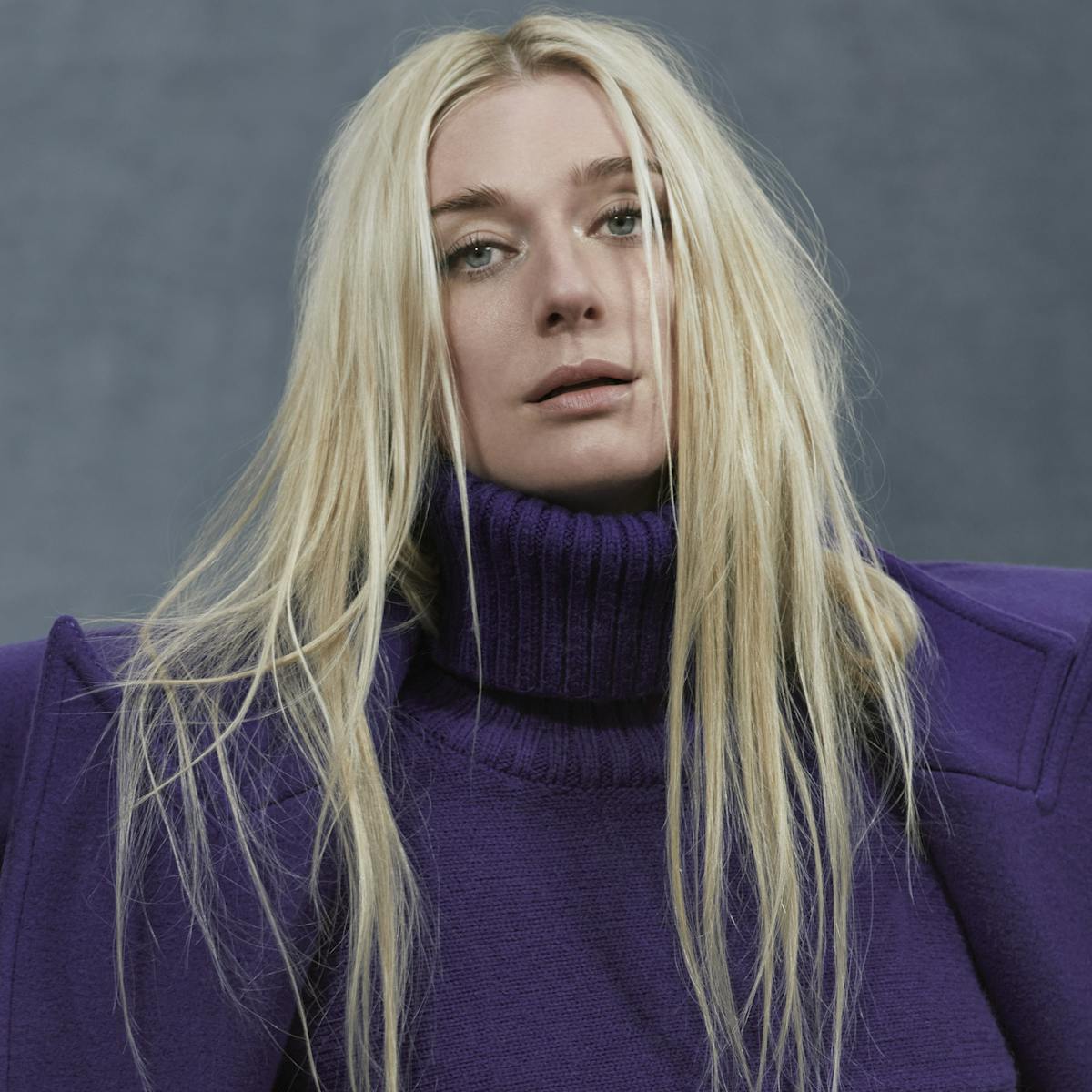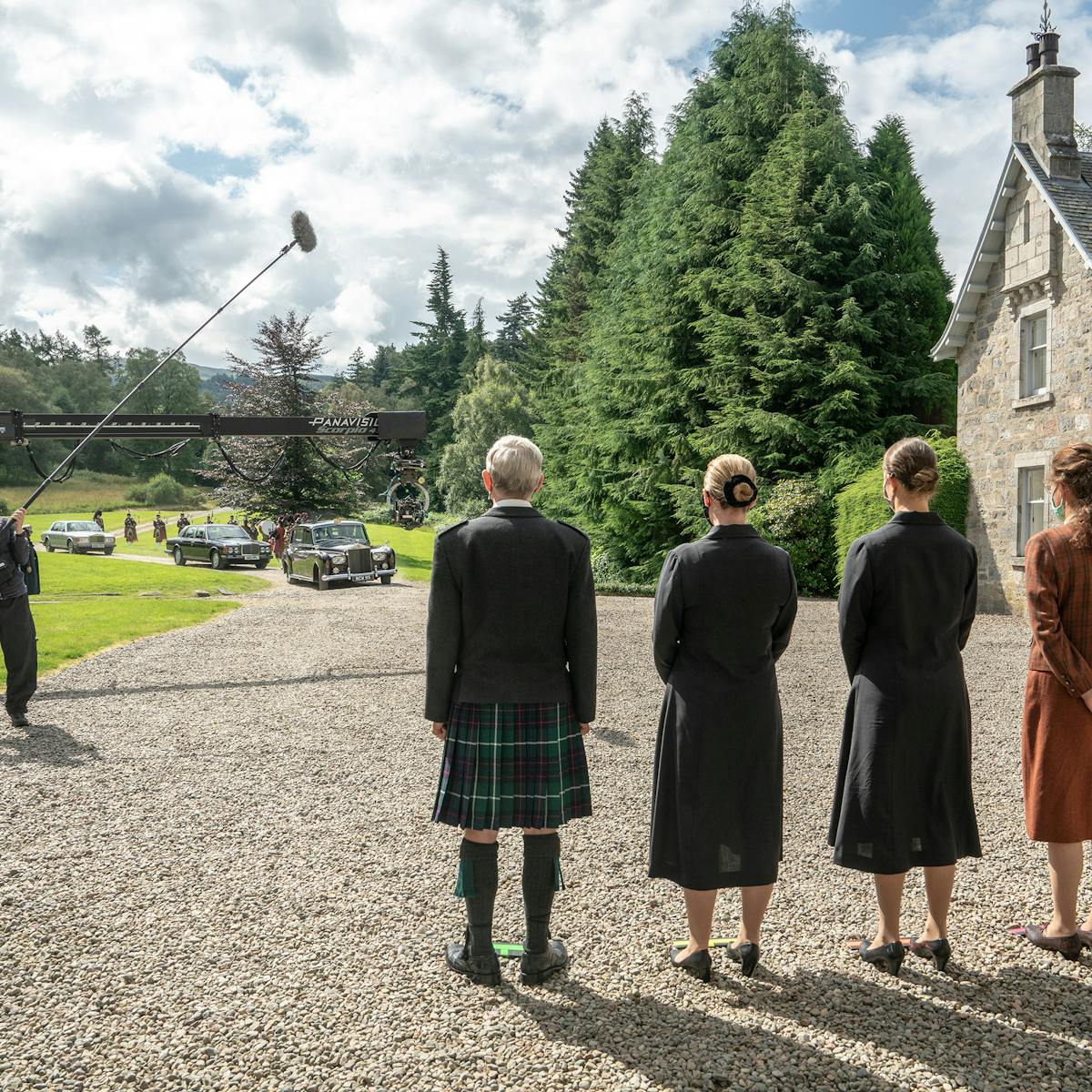Over 50 years of royal history, three casts, and countless accolades later, Peter Morgan and the show’s team look back on six seasons of The Crown.
Peter Morgan’s idea sounded far-fetched: a series about Britain’s monarchy, perhaps the most famous family in the world, that would be factual when it came to world events but would dramatize their private moments. The show’s six seasons, each covering around two decades, would be broken up with cast members playing their parts for only two seasons, believably reflecting the ages of their characters. Oh, and there would be dozens of elaborately constructed sets — after all, palaces are involved — and filming in locations from Scotland to South Africa.
More than a decade since he dreamed up the ambitious concept, The Crown’s creator and writer Morgan is now able to take a victory lap. His intimate and occasionally harrowing series, which premiered in 2016 and has now wrapped its sixth and final season, has won over millions of fans, collected 21 Emmys, and become a fixture in popular culture. It has showcased legendary talents including Olivia Colman, Imelda Staunton, Gillian Anderson, Jonathan Pryce, Lesley Manville, and John Lithgow. It has also launched the careers of relative newcomers like Emma Corrin, who was cast as a youthful Princess Diana, and Josh O’Connor, who portrayed her Prince Charles. It has catapulted actors like Claire Foy, the first Queen Elizabeth, and Elizabeth Debicki, the second Diana, to worldwide fame. All involved have been literally awarded for their efforts. “I’m stunned,” Morgan says. “But we did exactly what we said we were going to do, and we got to the end somehow.”
Morgan first fictionalized the royals in 2006 with his Oscar-winning feature The Queen, about the relationship between the sovereign and Prime Minister Tony Blair. That was followed by his 2013 play The Audience, about the queen’s weekly meetings with her prime ministers. He used both as guideposts to structure The Crown, explaining, “I decided to chop it up into moments of time shaped by the politicians.”
State matters aside, The Crown’s mesmerizing hold on audiences is all about the drama. “These sagas, family sagas, they’re particularly well-suited to long-form television,” Morgan says. And while this particular bloodline has plenty of onscreen discord, when it comes to the cast and crew, “I think this is as harmonious and as cooperative a group of people as we could have found,” says Morgan. “Everybody’s reached the finishing line as friends.”
Here, The Crown’s brilliant talent looks back on the series’ pressures and pleasures and why some of their best work involved pretending to be warm.
FOLLOWING THE LEADER
“The queen is everything, and the way her character radiates outwards is absolutely critical for the stability of the show,” says Morgan. “Really early on, I’d imagined who the three would be.” Foy inhabited the throne for the first seasons, set between 1947 and 1964, winning two Emmys and a Golden Globe. Colman picked up the baton for the next two seasons, which take place from 1964 to 1990, snagging an Emmy and a Golden Globe; and the lauded Staunton has been the last of the trio, seeing Season 6 to its fictional end in 2005.
Robert Sterne (casting director): Claire had the most difficult job of everybody because she had to start it. She set the bar.
Peter Morgan (creator, writer): Claire might’ve been a little bit more considerate and been slightly less fabulous . . .
Sterne: Claire didn’t play the grandeur or the haughtiness of
the monarch. You feel that you completely understand [her
as a] woman.
Claire Foy (Queen Elizabeth, Seasons 1 and 2): Peter’s Elizabeth is a quite naïve, sheltered person. She is thrust into a world she isn’t prepared for, where she has to make big decisions around globally significant events and navigate her way through people’s sometimes sinister agendas while trying to maintain her familial relationships, all the while grieving for her father. Ultimately, I think she’s a very kind, loving, strong, determined, funny, clever person. Sometimes she’s allowed to show it, and sometimes she’s not.
Sterne: Once we’d seen what Claire was doing, we had to sit down and think, Well, who is going to be next?
Morgan: It was a list of one — Olivia — and the phone call lasted one second. We said, “Would you like to . . . ” Yes. It was one of those, Oh, well, that was nice.
Olivia Colman (Queen Elizabeth, Seasons 3 and 4): I totally tried to do an impression of Claire the first few weeks. But at some point you’ve got to trust yourself.
Sterne: Then you go on to Imelda, who’s one of the finest that we’ve got, but also has an accessibility to her. When she said yes, we had a party.
Imelda Staunton (Queen Elizabeth, Seasons 5 and 6): When you’re asked to play the queen, you’re not going to say, “Well, hang on a second.” You think, Oh God, are you sure I’m the right person? The added weight was not only the original people we were trying to portray, but then everyone who has portrayed them before. You have to go through that and accept it and fear for your life, and then you just go forward.
BUILDING CHARACTER
Long before the cameras rolled, the cast and crew spent months preparing, from reading head of research Annie Sulzberger’s 100-page “protocol Bibles” to working with vocal coaches and Polly Bennett, a movement coach. Some even turned to the supernatural.
Staunton: They said, “Would you like to have a word with Polly?”
I thought, I’m just walking into a room, aren’t I? I couldn’t have been more wrong. [And] every scene, someone goes, “I think that vowel needs slight lightening.”
Meg Bellamy (Kate Middleton, Season 6): I worked with William Conacher, the vocal coach. That was probably where I nerded out the most. I made verb tables.
Josh O’Connor (Prince Charles, Seasons 3 and 4): I’ll create a book and it’ll have drawings or colors or images that I’ve printed to create a memory bank for a character. From day one, I got an email introducing me to the research team. I dropped them an email asking for books on Charles, and a day later a courier turned up with eight.
Gillian Anderson (Margaret Thatcher, Season 4): The Crown has an exemplary research team. Whether it was an initial Thatcher pack or me asking for details on every last cabinet member and what their specific roles and leanings were, or even [asking], “Is there archival footage of this particular joke she told while canvassing?” — the team was there to provide.
Morgan: Gillian will start preparing a year or two in advance. Olivia will prepare in the taxi on the way to the shoot. She probably won’t know where the scene comes in relation to anything else. She may have even forgotten what part she’s playing. And in makeup something will happen, and when she gets there on set, she is instantly brilliant.
Colman: The hair and makeup and wardrobe departments are unbelievable. Three-quarters of your work is done before you set foot on set.
Tobias Menzies (Prince Philip, Seasons 3 and 4): Neither Olivia nor I are from upper-class circles, and there’s a particular way of behaving that we needed guidance about. We had to ask ourselves what it’s like to be waited on, to be in rooms where everyone is looking at you.
Emma Corrin (Princess Diana, Season 4): There was one documentary called Diana: In Her Own Words where [Diana’s] narrating her own life story. I got this sense of her as being incredibly strong . . . but at the same time, having this innate sadness and vulnerability that she also wore, I think, just as boldly as her strength. It [was] kind of the basis of any research I did after that.
Helena Bonham Carter (Princess Margaret, Seasons 3 and 4): My aunt was a great help. She’s a graphologist, so she analyzes handwriting. Margaret was vulnerable. She had a lot of anxiety.
Benjamin Caron (director): The first time I met [Helena], she had just had a séance. Helena asked [Princess Margaret] her permission: Could she play her? Apparently Princess Margaret told her that she needed to tidy herself up a bit, but that she thought she’d be perfect.
SETTING THE SCENE
Morgan never confused fact with fiction. “I’m not a historian. I’m not saying, ‘This is what happened, folks.’ I’m saying, ‘This might have happened, and I hope you enjoy it,’” he explains. But when it came to the look of The Crown, teams assembled by costume designer Amy Roberts, head of hair and makeup Cate Hall, and production designer Martin Childs were charged with keeping it real.
Cate Hall (hair and makeup designer): Recreating iconic and well-known characters in an authentic and believable way is our main focus.
Amy Roberts (costume designer): A huge amount is required just to have the background knowledge. Each script contains an event which naturally demands research . . . endless photographs and references. Everything’s got to be made from scratch. I’m used to projects where [the characters] are normal people who have a wardrobe and reuse it. This is a group of people who didn’t do that.
Jonathan Pryce (Prince Philip, Seasons 5 and 6): You begin to take for granted that everything’s going to be correct and right. You have a scene where you’re going through photographs and letters and everything about it is accurate — the address, the date.
Bellamy: We did some university scenes and I looked in this vending machine, and there were all the chocolate bars rebranded to be of the time.
Dominic West (Prince Charles, Seasons 5 and 6): I loved tea because there would be proper cake, proper buns, proper biscuits.
Pryce: There was the moment in Season 5 [in a] vast hotel room in Moscow where there’s a slight confrontation between Philip and the queen. A lot of productions would have [had] two people sitting on a sofa. We were placed almost on either side of this enormous room full of enormous paintings, swagged [out] and draped, and [with] massive beds. We also had the privilege of going into a lot of ready-made homes, mansions, and palaces.
Martin Childs (production designer): We go to some pretty spectacular locations and therefore we have to build sets that are equal to those. But it’s pointless going to a location to shoot something small, you know?
West: You walk into a room and it looks like they haven’t done anything, and then you talk to the owners or the people who are standing guard and they say, “No, none of this is our furniture, none of the knick-knacks. That’s all set dressing.”
Sam Woolf (Prince Edward, Seasons 5 and 6): We’ve shot in so many extraordinary — freezing, often — houses.
Elizabeth Debicki (Princess Diana, Seasons 5 and 6): I think a lot of what you see in The Crown is actors doing unbelievable acting to not look cold because we’re in these drafty houses in summer clothes. They should teach a class in drama schools, like temperature evasion.
THE END OF AN ERA
Season 6, which is divided into two parts, covers Charles and Diana’s lives postdivorce, Diana’s death, William meeting Kate Middleton, and Camilla and Charles’s wedding in 2005. Soon after filming began, the cast and crew also found themselves mourning Queen Elizabeth, who died on September 8, 2022. “We carried on,” says Staunton, “but it was quite difficult, to be honest.”
Now, those involved with The Crown are adjusting to leaving behind not only the trappings of royalty but also each other. They’re taking notes from those who came before them — “We have a WhatsApp group,” says Anderson of her graduating class — but admit to some quivering of their otherwise stiff upper lips.
West: I’ll miss everything. I’ll miss the clothes, the cars, the houses, the crowds. And I’ll miss people bowing to me, particularly . . . I’ve tried to get my kids to do it. My wife said, “Why do you want crowds of people waving flags in your face?” and I went, “I don’t know! But it was so nice!”
Lesley Manville (Princess Margaret, Seasons 5 and 6): I shall miss our little jaunts to stately homes, which is not a bad way to earn a living.
Marcia Warren (Queen Mother, Seasons 5 and 6): I’m going to buy a bulb for my garden called crown imperial (fritillaria imperialis). We have to shred our scripts; I’ve put mine in the compost heap, so my garden will be royal by next year.
Staunton: I’m going to be bereft for a while, but I’ve felt, from the beginning, so utterly proud to be part of this.
Debicki: We all feel that we’ve given whatever we could, so there’s a kind of peace to it.
Pryce: It can go out loud and proud, this show.
Morgan: It was time. It’s worked, and it’s worked beautifully.


















